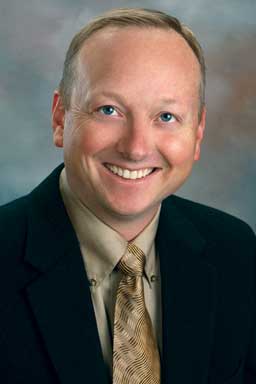President’s message: Changing the “PRRS happens” attitude
In the midst of planning a World Pork Expo 2010 porcine reproductive and respiratory syndrome (PRRS) education seminar for producers, I happened to mention to Dr Burkgren that I’ve heard it explained that there are two kinds of people: those who build the fence and then buy the cattle, and those who buy the cattle and then build the fence! Always ready with the rejoinder, Tom quipped that in the auctioneering circle they talk about three kinds of people: those who can count and those who can’t… Now I understand why that AASV Foundation auction is so successful every year.
But getting back to building fence and buying livestock: into which category do you fall? There’s not a right or wrong answer, and we need both. Action without a plan can certainly lead to trouble, but all planning and no action will accomplish nothing. Regarding PRRS, we have some serious momentum moving us forward in the fight to eliminate the impact of this virus. As we were meeting at our annual AASV educational meeting in Omaha, the National Pork Producers Council voted to work towards the elimination of PRRS virus from the US pig herd. That’s no small shift in commitment, and it aligns well with our own AASV position statement from 2005 “…that eradication of the disease from the North American swine industry is the long-term goal.”1 Past success has been all too fleeting with regard to PRRS. We know how to shorten the duration of a new clinical break; we can stabilize a population of pigs and take a farm to PRRS-negative status; but we have largely failed to keep the disease out of farms in pig-dense areas. That must change, and today producers are devising and implementing plans to get that done.
As many of you know, my practice is centered in Martin County, a region with high pig population on the Minnesota-Iowa line. I’ve joked that it’s a continuous flow county – because we do have our share of infectious disease challenges! Many of you live in a similar situation. Between 1.5 and 2 million pigs are marketed from the county each year, and in the middle of this wean-finish population exists a large number of sow farms. It gives one pause in considering the monumental task of actually getting rid of PRRS. Then again, I also get reminded first-hand year after year why we cannot afford to live with this disease whose impact is great both financially and emotionally. So will Martin County lead the way? No, we probably will not be among the first wave of area projects to eradicate PRRS. But producers here are implementing strategies to move in that direction. Much is known today that is leading to less PRRS for area farms – better biosecurity for all phases of production, including changes in transportation, pig flow, mortality disposal, and building security. Farmers and veterinarians are sharing ideas and experiences to improve implementation. Several sow units have recently adopted year-round air filtration technology as part of their biosecurity package of enhancements in order to cut the risk of virus entry into the farm. We know the strategy can work because boar studs have proven it over the past 4 to 5 years in these very same pig-dense regions. But the biggest change necessary for future success on these farms comes in the form of attitude.
Deep Survival,2 by Lawrence Gonzales, weaves together a series of accounts of personal survival in nature, from mountain climbs and hiking gone wrong, plane and boating accidents, storms, and other disasters. Taking us through their stories, Gonzales identifies characteristics for who lives, who dies, and why. Along the way, the author builds an understanding of truths about how to live with risk. What Gonzales found in his analysis of survival accounts were some critical keys. Survivors didn’t spend time in despair over their plight, they looked to themselves and took responsibility to make a plan and act: “…expecting someone else to take responsibility for your well-being can be fatal…Be here now…The world won’t adapt to me…I must adapt to it.”2 Often, the survivor started with a small thing – devoting himself to a task that can deliver measurable progress and thus feed a positive mental attitude. Alone on his life raft, next to a sinking yacht, a man turned fear into focus and dove underwater into the cabin to retrieve his survival bag. “But already Calahan was formulating a plan for action…The next step was to take bold action while exercising great caution…He had just saved his life by risking it, which is the essential task of every organism. No risk, no reward. No risk, no life.”2
The AASV will continue to provide a forum for sharing critical information related to PRRS. At the spring meeting, the AASV Board of Directors adopted the paper “Standard Herd Classification and Related Terminology for PRRS Virus” put forth by the PRRS Task Force committee. Members are working on more than a half-dozen PRRS area-regional control projects. Members of AASV don’t tend to be “fence sitters.” Risks are being taken and plans are being made – bold action while exercising great caution. Progress is sure to follow.
References
1. American Association of Swine Veterinarians News. AASV establishes position statement on PRRS eradication. 2005. Available at: https://www.aasv.org. Accessed 24 May 2010.
2. Gonzales L. Deep Survival. New York, New York: W. W. Norton and Company, Inc; 2003.
—Paul Ruen, DVM
